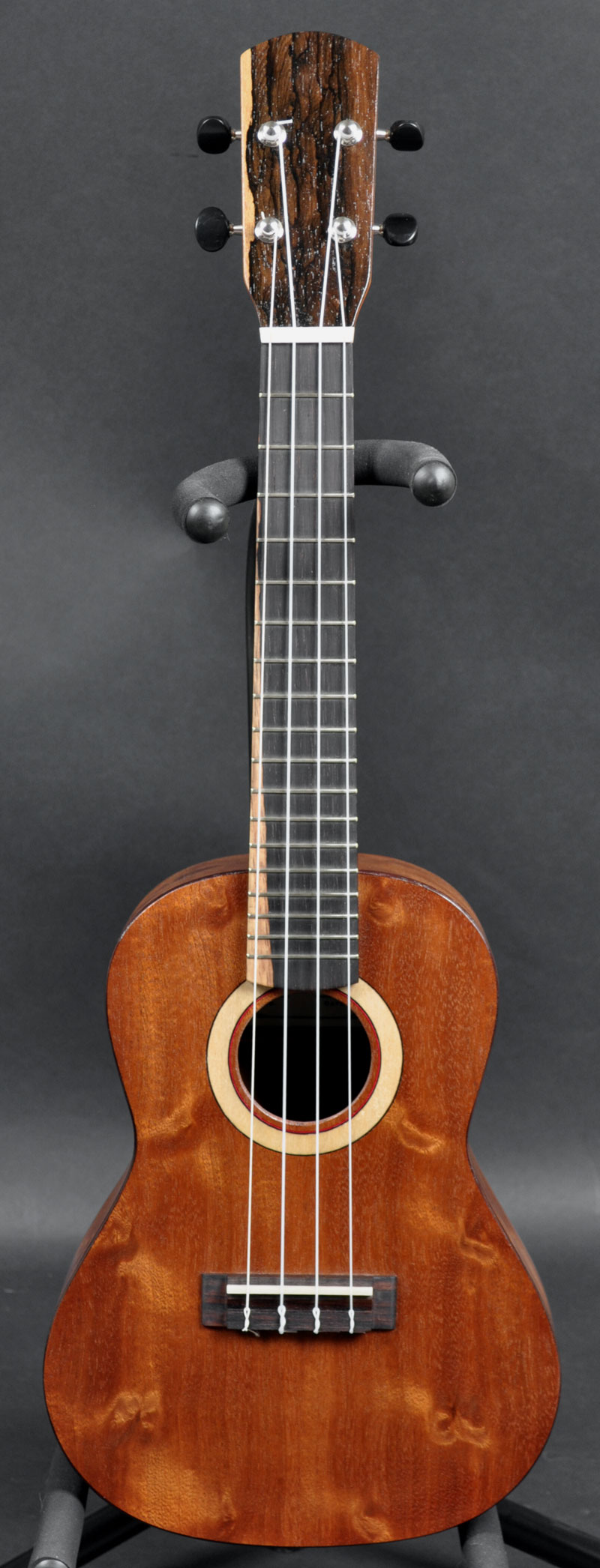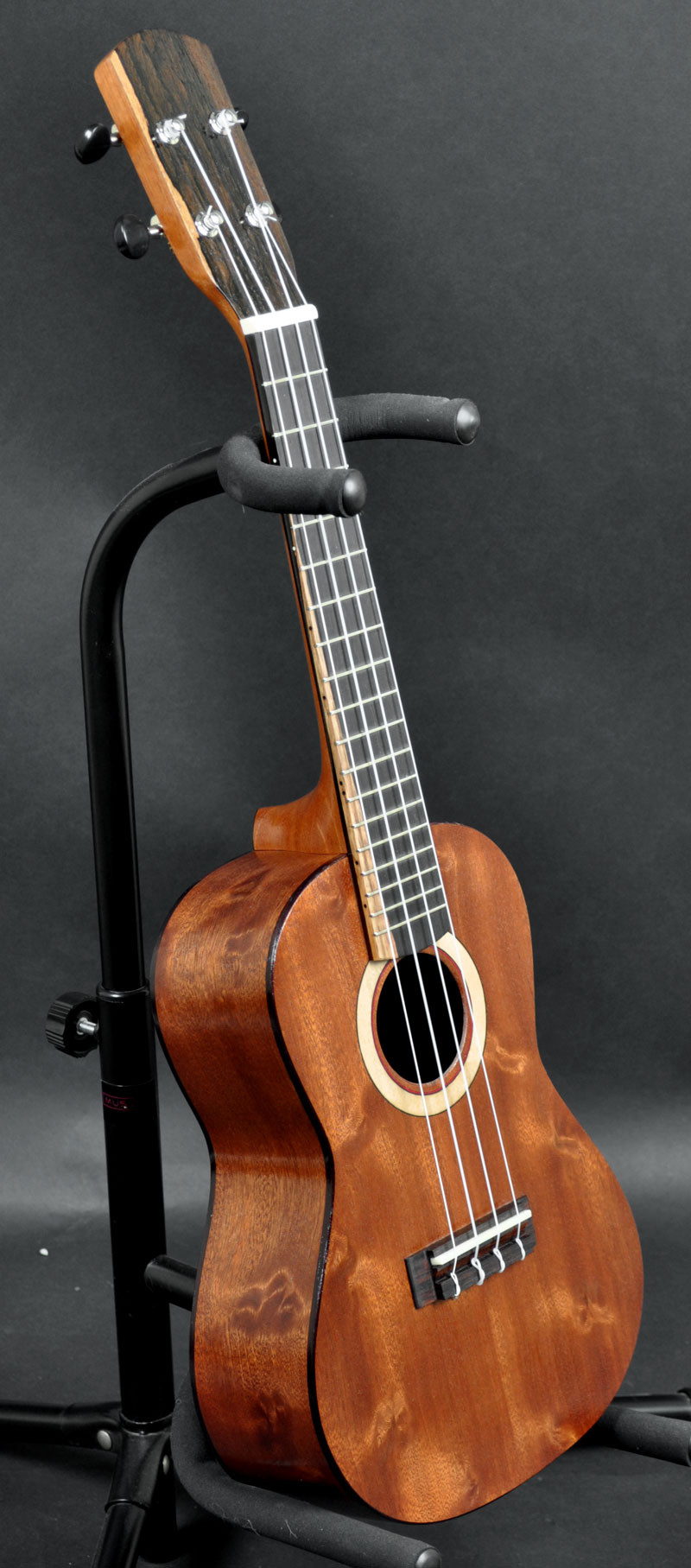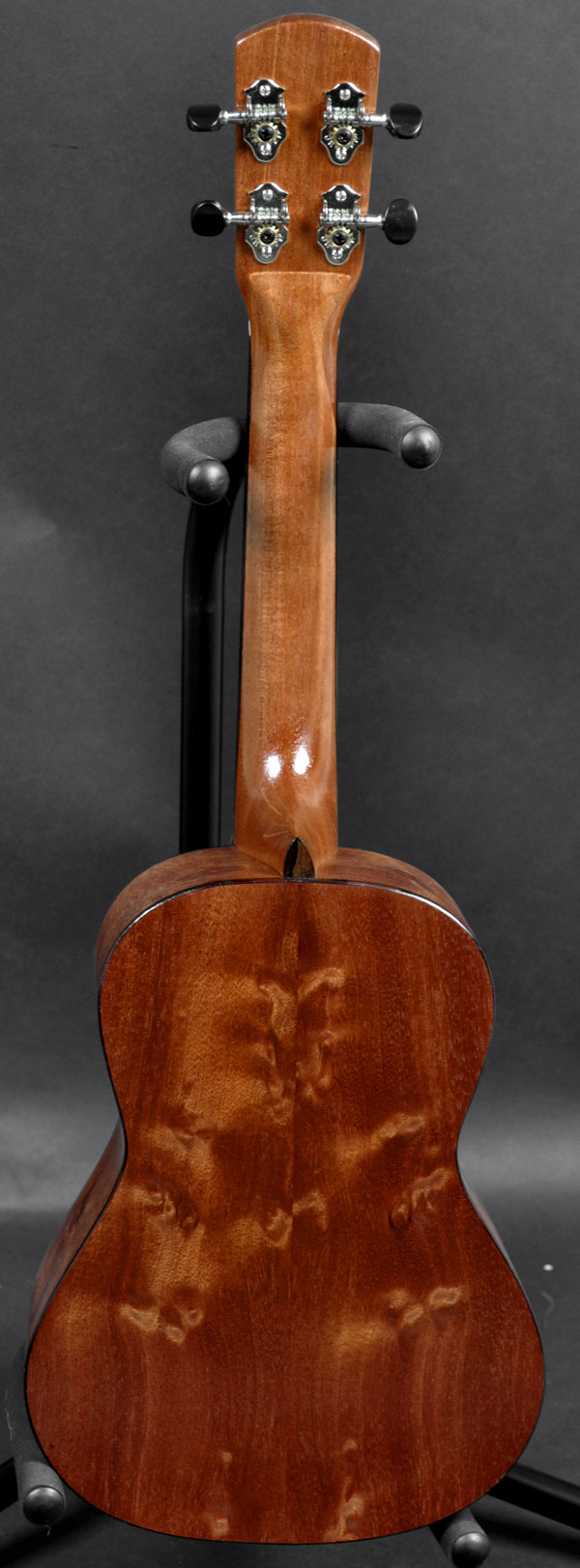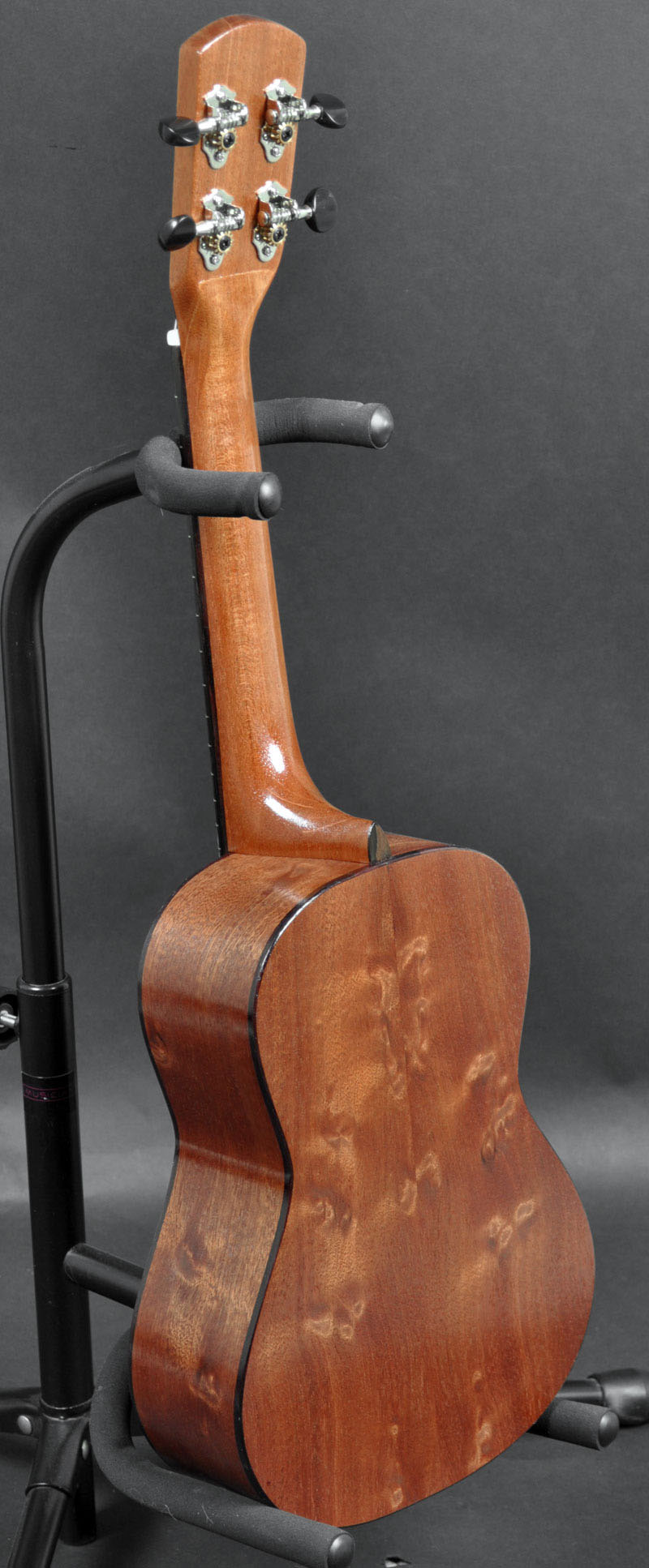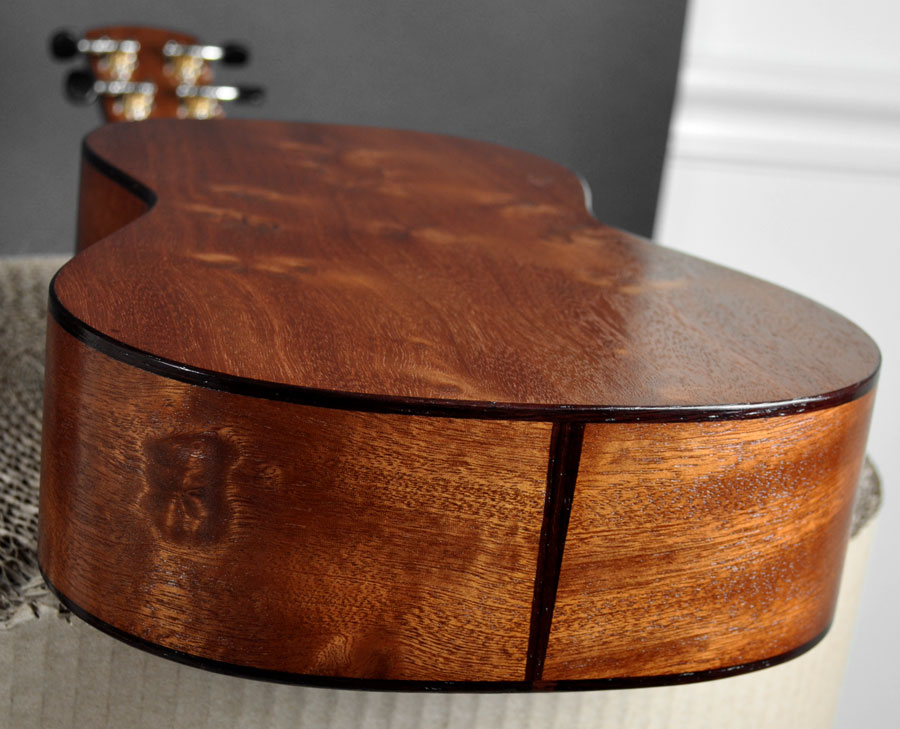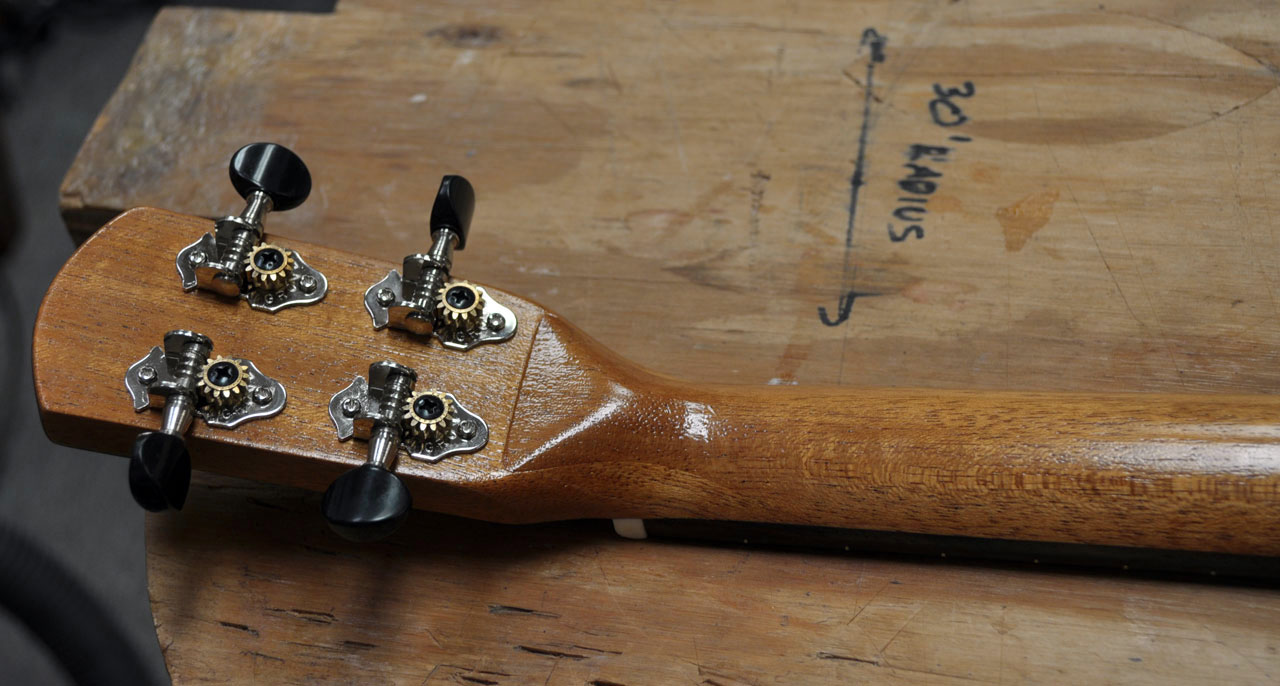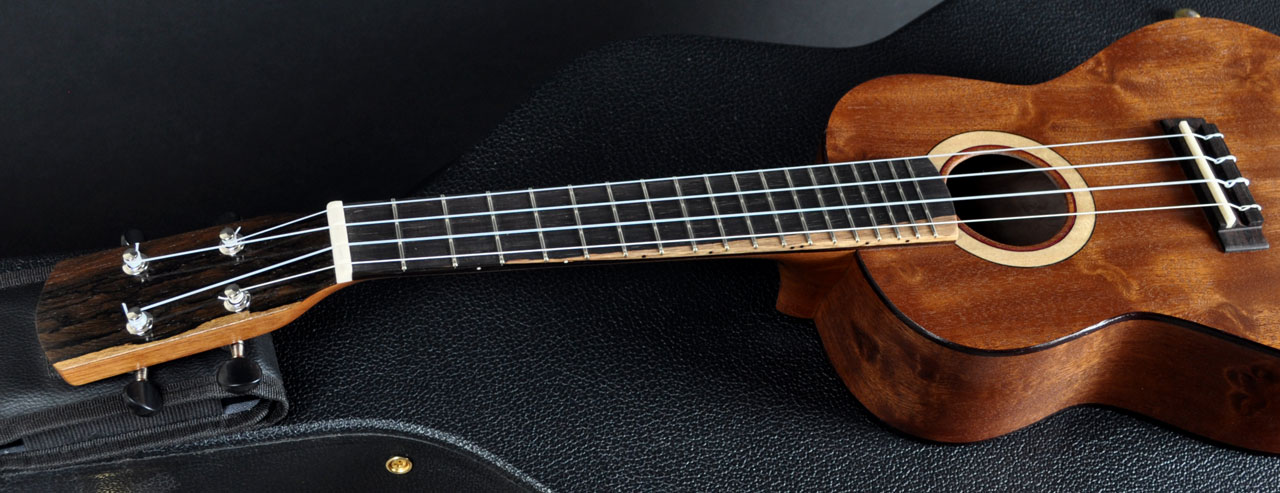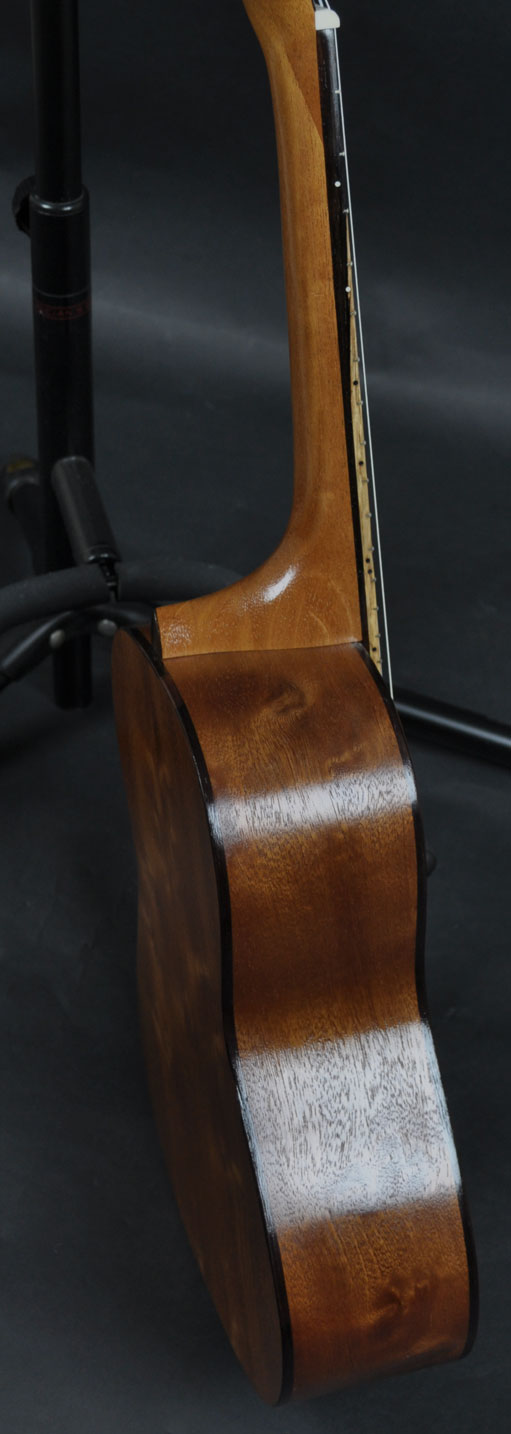Hello all, after building 54 guitars, I feel like I'm finally ready to build a concert uke and have a few questions. When I build a stringed instrument that's new to me, I tend to make it into a guitar-like instrument, but here I'm trying to avoid that and make it as uke-like as possible, whatever that is. With that in mind:
1. Are uke fretboards traditionally radiused or flat like a classical guitar?
2. Are the tops traditionally flat or radiused? If so, by how much?
3. Bracing... is there a standard or is it all over the place? I've seen no bracing, 3 fans, and 5 fans. Do a lot of folks use a bridge patch?
4. Is the neck usually adjustable via truss rod or similar, or is that overkill?
Thanks for your replies... I really appreciate them!
1. Are uke fretboards traditionally radiused or flat like a classical guitar?
2. Are the tops traditionally flat or radiused? If so, by how much?
3. Bracing... is there a standard or is it all over the place? I've seen no bracing, 3 fans, and 5 fans. Do a lot of folks use a bridge patch?
4. Is the neck usually adjustable via truss rod or similar, or is that overkill?
Thanks for your replies... I really appreciate them!


